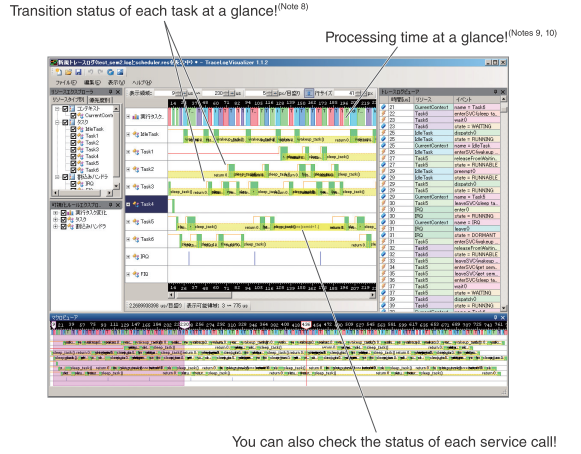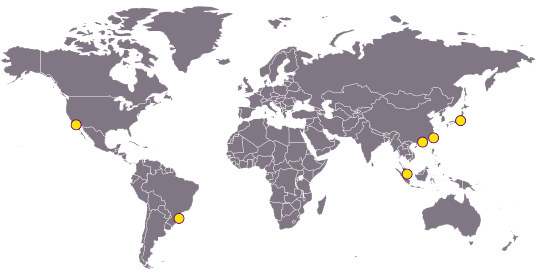RTOS for IoT (Scorpius) (Discontinued)
Multi-task real-time OS for small embedded devices

Scorpius is an ITRON-like real-time operating system.
High-speed task scheduling operation is provided with small-code size, making this operating system perfect for the needs below.
- To run multi-tasking on small embedded devices such as IOT devices where code size and memory limitations are critical
- To run high-speed task switching even with a powerless CPU
- To implement a multi-task environment without high-level knowledge about OS
- To implement power saving functions that are essential for IoT devices
- To implement a security function to IoT device
- To monitor and check a status of internal operations of the system such as task transitions.
- To consider some technical support for future expansion of software and execution analysis
Features
|
|
Specifications
| Kernel Code Size(Note 2) | 0.95 KBytes (task functions only) to 2.5 KBytes (all functions) |
| Memory size for Each Task management | Approximately 80 Bytes(Note 3) |
| Task Dispatch Time | 4.2 us(Note 4) with ARM7/40 MHz, 1 us with Cortex-M3/80 MHz |
| Supported Service Calls(Note 5) | Task, Semaphore, Event Flag, Mailbox, Trace Log, Energy Saving(Note 6) , Memory Pool(Note 6) , Security(Note 6) |
| Trace Log Function | Compatible with TOPPERS Project trace log viewer TraceLogVisualizer(Note 7) |
Supported Devices
- ARM7
- Cortex-M3/M4
- Nios II (Standard)
Deliverables
- Source code
- User’s manual
- Reference environment
Evaluation Environment
- Silicon Labs EFM32TM Pearl Gecko Starter Kit
- Silicon Labs EFM32TM Giant Gecko Starter Kit
- Analog Devices ADuCM320 Evaluation Board
- Terasic MAX ® 10 Nios II Embedded Evaluation Kit
Example Task Transition Display Using TraceLogVisualizer

(Note 1) Measured time required for dispatch processing (task context switching) at Cortex-M3/80 MHz operation.
(Note 2) Compilation result for ARM7 core using Macnica environment.
(Note 3) Memory area size required for every addition of a task.
(Note 4) In the case of typical commercially available RTOS supporting similar CPUs, task dispatch time is around 5 us at 60 MHz
(Note 5) Kernel can be created with minimum required functions only.
(Note 6) Support planned in near future.
(Note 7) Refer to http://www.toppers.jp/en/index.html
(Note 8) Trace log function may change overall system processing order.
(Note 9) Requires implementation of a timer function.
(Note 10) Displays execution time including the trace log function code.

